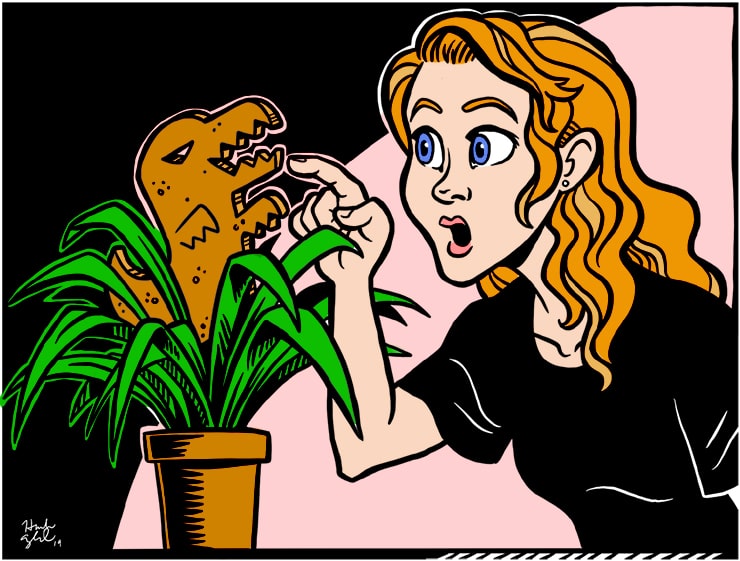Read by Matilda Longbottom
Hey, Mom,” my nine-year-old son Andy called to me from the living room. “Brett wants to know about your new plant. What is it?”
“A bromeliad,” I proudly answered, as I joined the two boys in the living room. “Isn’t it gorgeous? It’s a tropical plant, but it can live in a variety of climates.”
I was so proud of my bromeliad. I’d grown easy ivies and some simple ferns before, but never a tropical plant like this one. My bromeliad was not only fancy, it was exotic! This was the kind of houseplant that would pop up in the drawing room of an English mystery novel.
“Look,” I explained to the boys, “you water it from above, right down into the center of the plant, not on the dirt. It absorbs the water from there. In fact, some small creatures, like little salamanders and tree frogs, can live inside the plant and use that accumulated moisture. It’s like there’s a tiny lake in the middle of the plant. This adaptation is called a ‘tank habit,’ and it happens because it doesn’t have a well-developed root system to take in water.”
“I don’t know,” said Brett doubtfully. “It looks like the top of a pineapple to me.”
“Of course,” I explained, “because pineapples are bromeliads, too. They’re all in the same plant family.”
I realized I’d probably given them enough facts for now. Later I could tell them about how people have been growing bromeliads for thousands of years, how South American natives traditionally used them for both food and ceremony, and how when the Spanish conquistadors brought pineapples back to Europe, they became so popular that images of them became familiar in art and sculpture. But no need to load their nine-year-old minds with too many facts all at once.

I continued to nurture my plant, moving it around until I found the best spot in the living room for its well-being, but mostly I was busy with my garden. It was late in the season and, what with tomatoes and beans and corn and more, I was too busy to think much about houseplants.
Until one day when, as I watered my bromeliad, I noticed a small yellow bud forming right in the middle, in the little puddle of water. A bud! My bromeliad had formed a bud! I’d found the right spot for it and had given it just the right amount of water and food—and now it was going to gift me with a flower in return!
I was ecstatic! Overwhelmed! My family seemed to be, also. Andy showed it off to his friend Brett, and they both grinned from ear to ear.
Each day the yellow bud appeared a little larger. But it sure was an odd shape. This was going to be an unusual flower. Oh, well—exotic plant, exotic flower, right? Perhaps some of my book club friends who were garden club enthusiasts might want to drop by and view the grand blooming.
Luckily, I did not invite them—by the third day the shape of the bud had turned into a tiny dinosaur! My bromeliad had grown a dinosaur bud?!
For a moment I was bewildered. And then I remembered the little package of colored sponge dinosaurs bouncing around the house, the kind with the instructions, “Put them in water and watch them grow!”
No one ever admitted to planting the dinosaur in the bromeliad, but when I recalled how widely Andy and Brett had smiled, I had my suspicions.
The bromeliad never did blossom on its own. I believe it was so embarrassed by the whole dinosaur episode that it just didn’t have the heart.
I know I was. ❖




What a lovely story! A fairy story but this one is absolute fact! Thank you so much!
Loved the story, thank you.